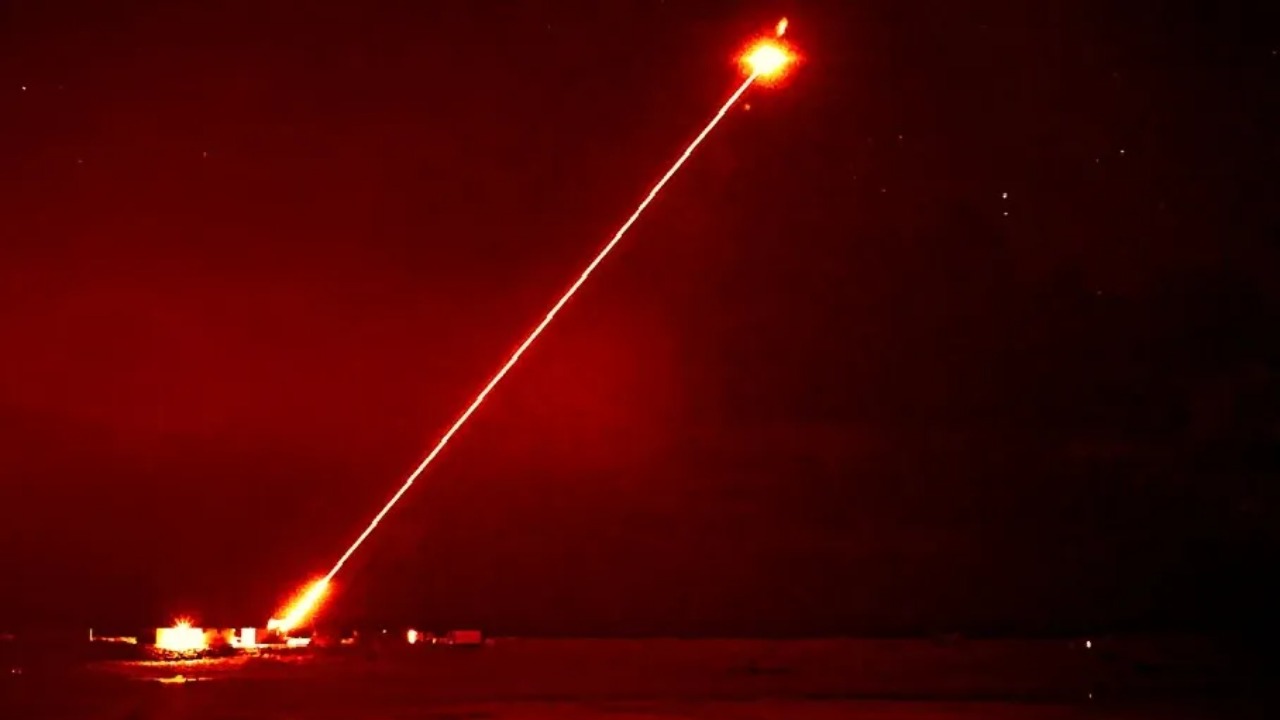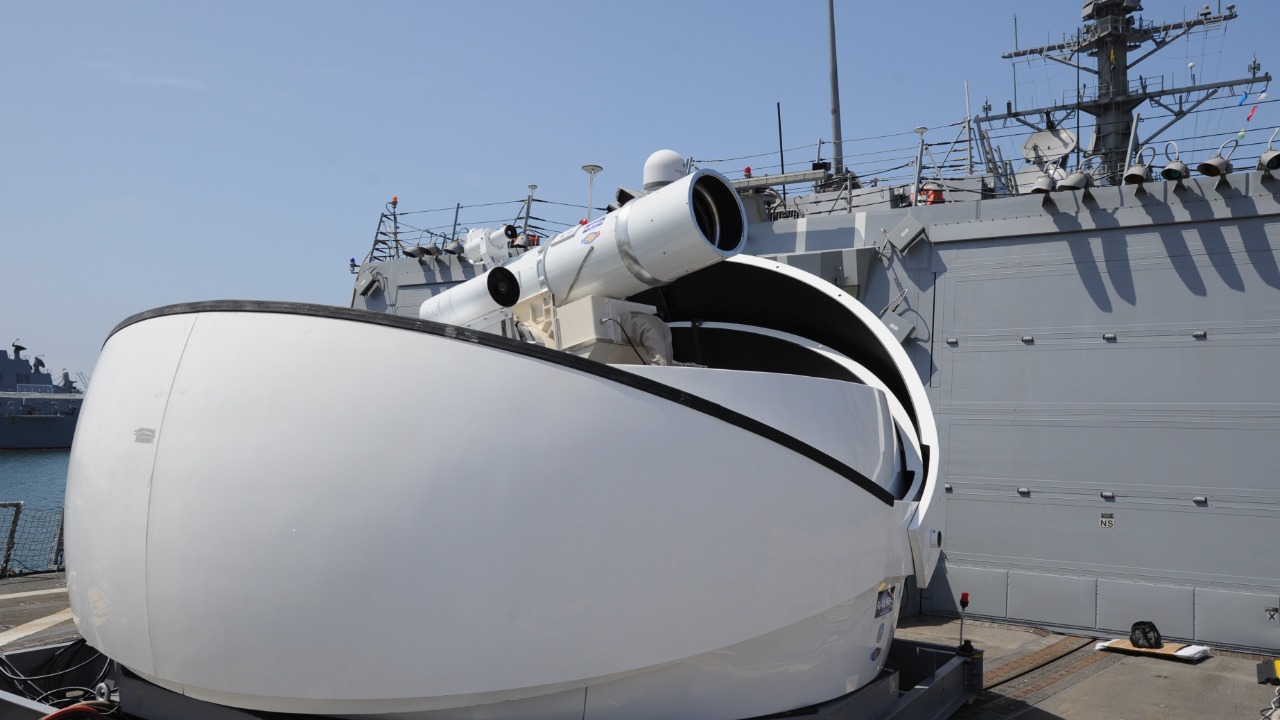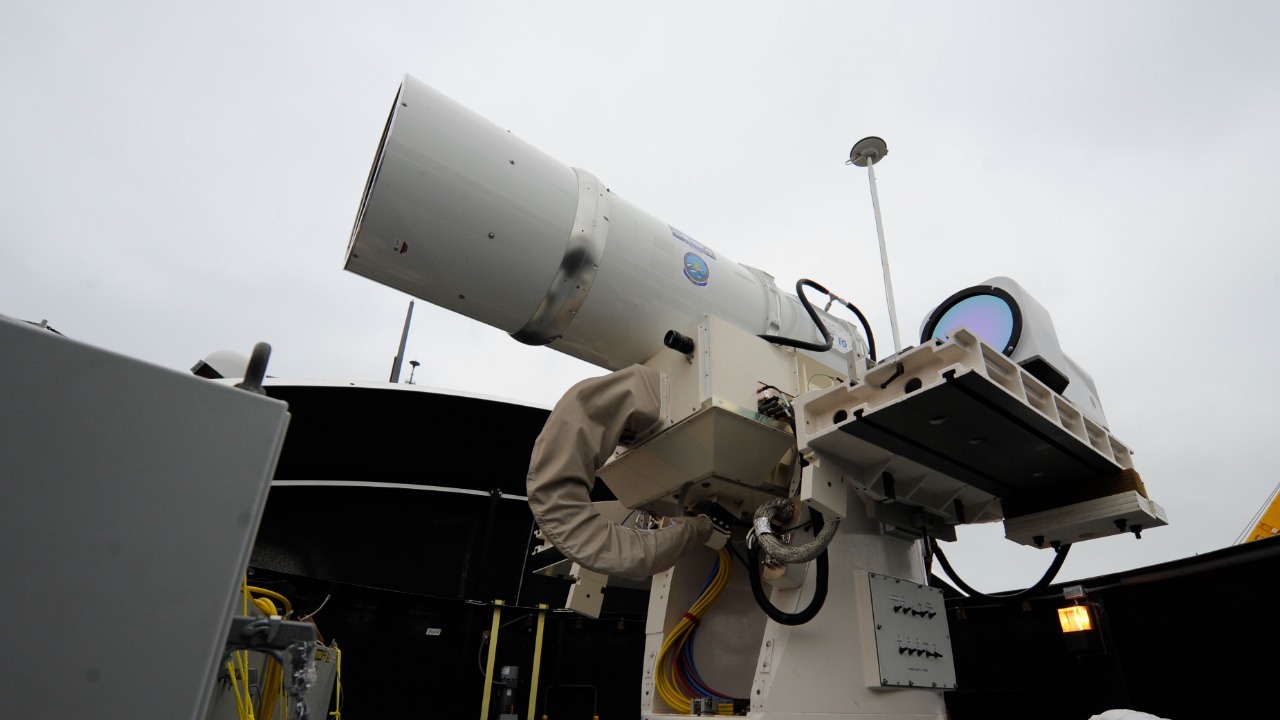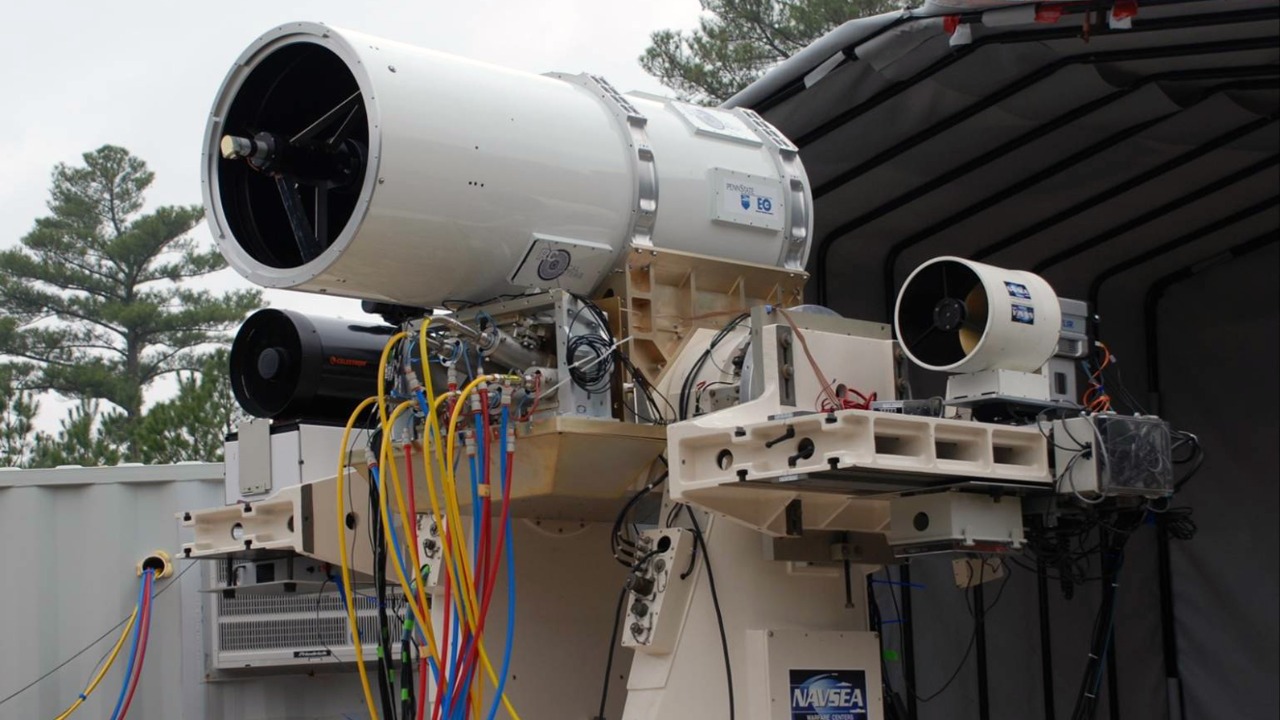
The advent of advanced military technology has taken a significant leap forward with a NATO ally receiving a 100kW laser weapon capable of neutralizing drone swarms in mere minutes. This development marks a pivotal moment in modern warfare strategy, offering a glimpse into the future of defense systems and their potential impact on global security dynamics.
The Evolution of Laser Weaponry

Laser technology has long been a subject of fascination and speculation within military circles, tracing its origins back to science fiction before becoming a reality. The initial concept of using lasers in military applications dates back to the mid-20th century, when researchers began exploring the potential of directed energy as a means of defense and attack. Early efforts were hampered by technological limitations, but they laid the groundwork for future innovations.
Over the years, significant technological advancements have propelled laser weapons from the realm of theory into practical application. Breakthroughs in power generation and beam control have made high-energy lasers not only feasible but also highly effective on the battlefield. The development of solid-state lasers, in particular, has been a game-changer, enabling the creation of compact and efficient laser systems capable of delivering the energy needed to disable or destroy targets.
Previous implementations of laser weapons in military settings have provided valuable lessons and insights. The U.S. Navy, for instance, successfully deployed the Laser Weapon System (LaWS) aboard the USS Ponce in 2014. This early example demonstrated the potential of laser technology, highlighting both its capabilities and areas for improvement. Such experiences have informed subsequent developments, paving the way for more advanced systems like the 100kW laser weapon.
Capabilities and Specifications of the 100kW Laser Weapon

The 100kW laser weapon represents a significant leap forward in terms of power and capability. Its key specifications include a power output of 100 kilowatts, which allows it to deliver concentrated energy over significant distances. The weapon is equipped with advanced targeting systems that enable it to lock onto and track multiple targets simultaneously, ensuring precise engagement of drone swarms. The range of the system is designed to cover substantial areas, providing a robust defensive perimeter.
In combat scenarios, the operational mechanism of the laser weapon relies on its ability to focus intense energy on a target, causing structural failure or disabling electronic components. Against drone swarms, this capability is particularly effective, as the weapon can rapidly switch between targets and neutralize them in quick succession. The system’s ability to deliver sustained fire without the need for traditional ammunition provides a distinct advantage in prolonged engagements.
Compared to conventional anti-drone measures, laser weapons offer several advantages. Their precision and speed of engagement reduce the risk of collateral damage, and their reliance on electricity rather than physical munitions minimizes logistical challenges. Furthermore, the cost-per-shot of a laser weapon is significantly lower than that of traditional missile systems, making it an economically attractive option for sustained operations.
Strategic Implications for NATO and Global Security

The deployment of a 100kW laser weapon significantly enhances NATO’s defense capabilities, reinforcing the alliance’s ability to protect its members from emerging threats. By integrating cutting-edge technology into its defense strategy, NATO can maintain a strategic advantage and deter potential adversaries. The presence of such advanced systems also serves as a powerful signal of commitment to mutual defense and collective security.
For adversaries that rely heavily on drone technology, the introduction of laser weapons presents a formidable challenge. Traditional tactics that involve overwhelming targets with drone swarms may need to be reconsidered in light of this new capability. As a result, military planners may need to explore alternative strategies and develop countermeasures to address the evolving threat landscape.
On a geopolitical level, the deployment of advanced laser weaponry has the potential to influence global military alliances and tensions. As nations seek to bolster their defenses, the proliferation of such technology could lead to shifts in power dynamics and strategic alignments. The development and deployment of high-energy laser systems by NATO members may prompt other countries to pursue similar capabilities, potentially leading to an arms race in directed-energy weapons.
Challenges and Considerations

Despite its promise, the 100kW laser weapon is not without its challenges and limitations. Environmental factors, such as weather conditions and atmospheric interference, can affect the performance of laser systems. Additionally, maintaining and operating such advanced technology requires specialized knowledge and infrastructure, which may pose logistical challenges for some military forces.
Ethical and legal considerations also arise with the use of directed-energy weapons. The deployment of high-energy lasers raises questions about compliance with international law, particularly regarding the principles of proportionality and discrimination in armed conflict. As these systems become more prevalent, it will be essential to address these concerns and establish clear guidelines for their use.
Looking to the future, further advancements in laser weapon technology are anticipated. Researchers are continually exploring ways to increase power output, enhance targeting precision, and improve system reliability. As these developments unfold, the implications for global security and military strategy will continue to evolve, shaping the future of warfare and defense systems.
The Future of Military Technology and Defense Systems

The integration of laser technology with existing defense systems presents an opportunity for enhanced effectiveness and operational synergy. By combining laser weapons with traditional platforms, military forces can create a layered defense approach that maximizes their capabilities. Such integration will likely involve collaboration between defense contractors, military researchers, and policymakers to ensure seamless implementation and optimal performance.
Ongoing research and development efforts are focused on pushing the boundaries of what laser weapons can achieve. Innovations in energy storage, beam control, and system miniaturization are among the areas of interest, with the potential to yield even more powerful and versatile laser systems. These advancements will likely play a crucial role in shaping the future landscape of military technology.
In the long term, the deployment of laser weapons aligns with broader strategic goals of military modernization and preparedness for future threats. As nations invest in cutting-edge technology, their defense forces are better equipped to respond to an evolving array of challenges. The continued development and integration of laser systems will be pivotal in maintaining a competitive edge and ensuring the security of nations in an increasingly complex global environment.